
The ESG2160DTE, produced by Eletex of Japan (now merged into YEM Eletex), is a piece of video test equipment. The following explanation is derived partly from the Japanese-language maker's datasheet, and partly from experience with the unit itself. I have sent to Japan for additional documentation, but do not know when I may hear back.
The ESG2160DTE is a convenient 1RU package which supports all the scanrates commonly required in analog video work. Its differential component output is widely useful, and a D-Terminal connector makes for easy interface with Japanese consumer electronics. Sync outputs are also provided for applications which require them. Because patterns can be edited or added, it is very adaptable to user requirements, and the universal power supply makes for even greater flexibility.
The ESG2160DTE does not have RGB analog outputs, a digital (SDI) output, or (perhaps most importantly) a reference sync input. As a result, it may be difficult to integrate into a studio environment, and may not provide all the necessary test signals in the laboratory. It does not support newer progressive-scan modes such as 24/23.97p, or any 1125-line progressive-scan modes. It also does not provide complete flexibility in the 1125-line range — ideally, it would be possible to select 1080 or 1035 active lines separately from the scan rate.
This unit is not as versatile as something like the Shibasoku TG15C6, despite supporting more scan rates, but for what I paid (less than $150), it must be counted a good bargain. NB There is also a version without support for the 50 Hz formats, model number ESG2160DT.
| Lines per Frame | 525 | 625 | 750 | 1125 | ||||||
| Active Lines per Frame | 480 | 575 | 720 | 1135 | 1080 | |||||
| Interlace Ratio | 2:1 | 1:1 | 2:1 | 1:1 | 2:1 | |||||
| Vertical Frequency (Hz) | 59.94 | 50.0 | 60.0 | 59.94 | 60.0 | 59.94 | 50.0 | |||
| Horizontal Frequency (kHz) | 15.734 | 31.46 | 15.625 | 31.25 | 45.0 | 44.955 | 33.75 | 33.716 | 28.125 | |
| Master Clock Frequency (MHz) | 27.0 | 74.25 | 74.1758 | 74.25 | 74.1758 | 74.25 | ||||
| Signal Standard | Betacam | SMPTE 293M | ITU-R BT.601 | SMPTE 296M | SMPTE 260M | SMPTE 274M | ||||

As can clearly be seen on the right-hand side of the picture, this example is fitted with feet rather than rack ears.
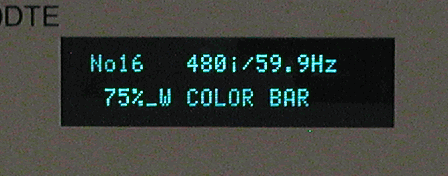
A close-up of the front panel vacuum fluorescent display, showing a cycle through the TV SYSTEM parameter. The indication "No16" refers to the fact that 16 combinations of TV system and pattern number can be set as "programs", accessible by pressing the PROGRAM No. buttons on the right. The program menu also allows displaying the scanrate in the picture with a simple black-background text overlay.

The "D-Terminal" is much like a very small Centronics connector, and includes a latching mechanism. In addition to the video signal and ground lines, it incorporates display signalling lines to communicate scanrate and aspect ratio to the monitor. The arrangement has decided advantages over the use of three RCA jacks for component video on American consumer electronics.
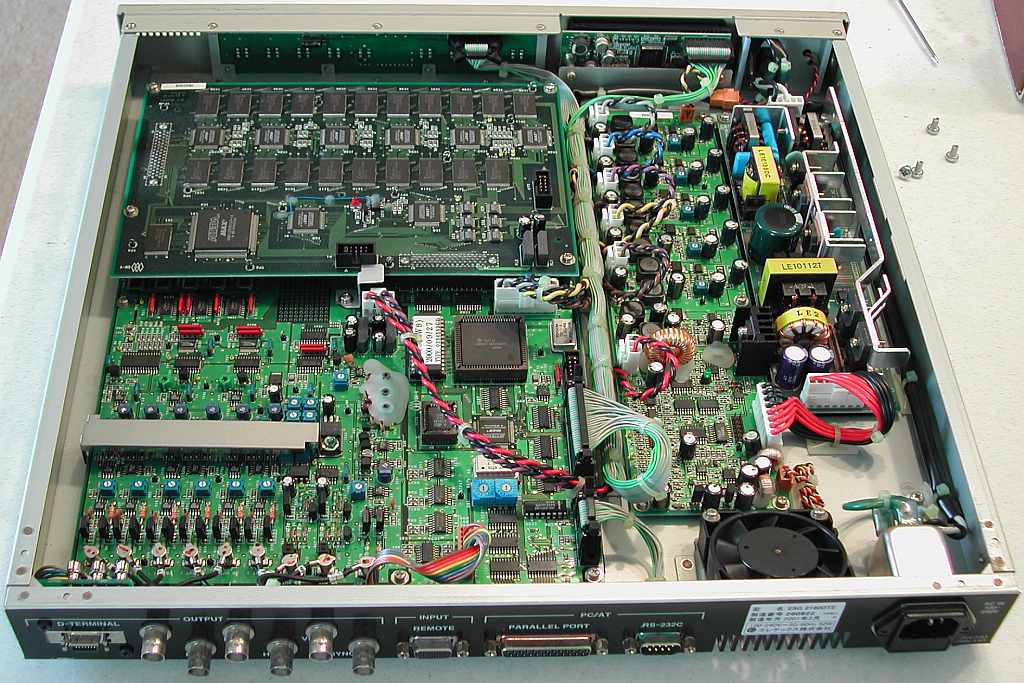
The metal shield appears to cover the digital-analog convertor circuitry. The six potentiometers immediately behind it (toward the camera in this rear view) are labeled as trimmers for the analog component levels.
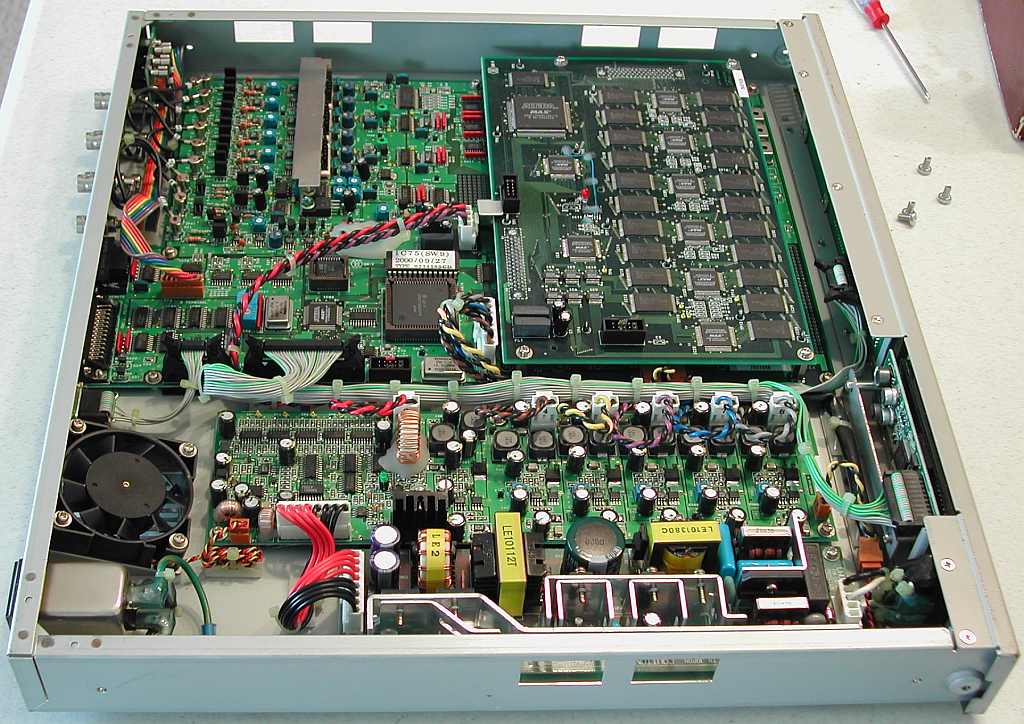
Note the elegant placement of the cooling fan.
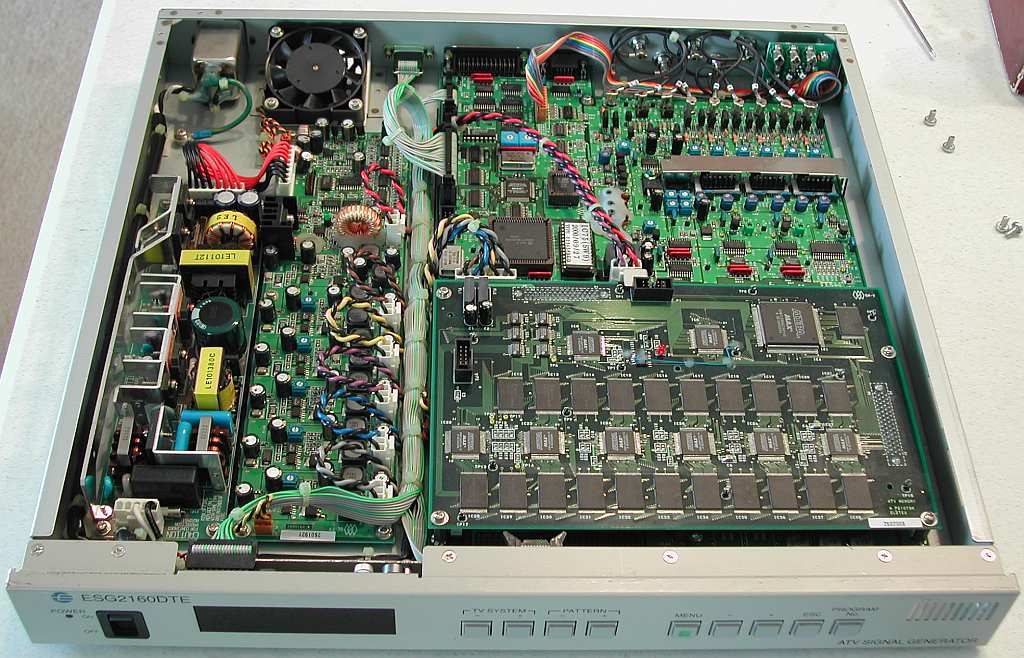
At rear, the small coaxial cables connecting the main board to the output terminals can clearly be seen, each with its label. The cap-style connectors are unfamiliar to me, but a nice touch.
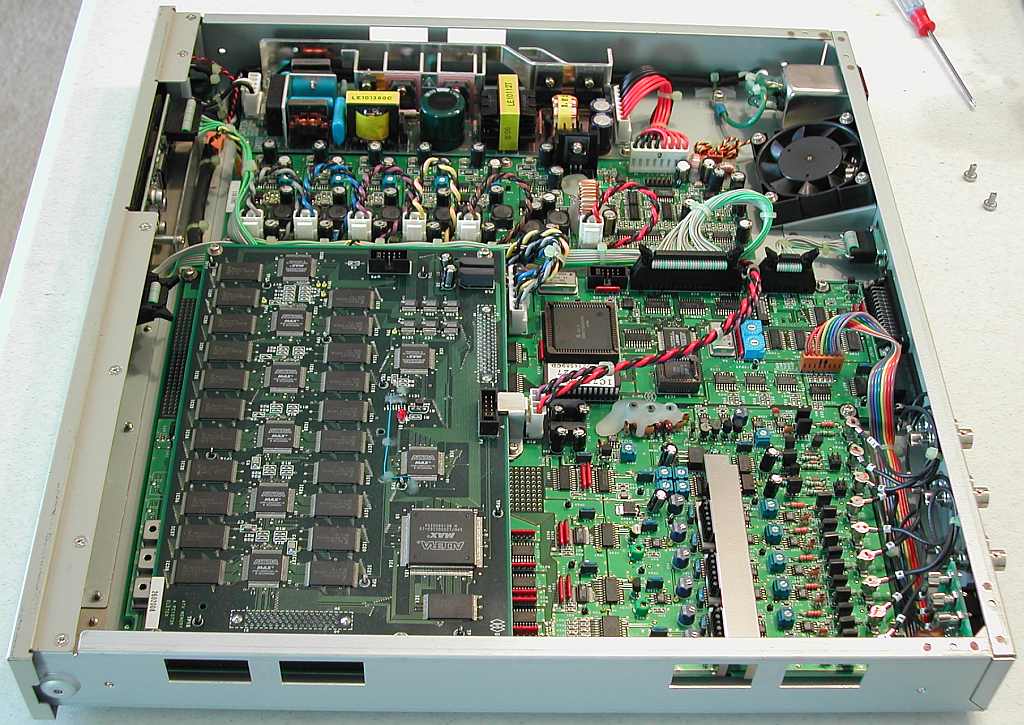
The three trimmable crystal oscillators peeking out (at left) from under the front edge of the "ATV MEMORY" board have frequencies of 27.0 MHz for the scanrates based on ITU-R BT.601, and 74.1758 and 74.25 MHz for those based on BT.709 — and pads can be seen for two more, just in case. Two additional crystals, 12.000 and 4.9152 MHz, are located further back on the main board. The last-mentioned is the clock for the serial and parallel communications interfaces, but the function of the other is currently unknown.